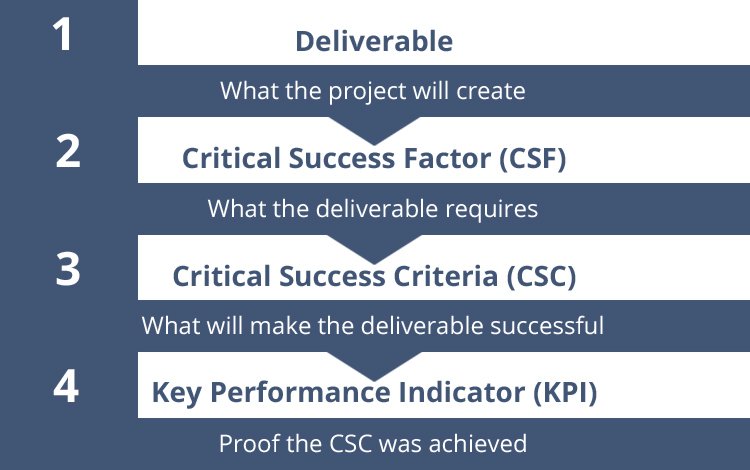15% off eLearning, up to 20% off virtual courses - use code: EARLY1225UAE
4 October 2019 | Updated on 4 October 2022
Critical success factors in project management
While it’s obvious that some tasks have to pre-empt others, projects often have a web of tasks and goals. It can be difficult to focus the project team on key result areas. So how does documenting cri...

While it’s obvious that some tasks have to pre-empt others, projects often have a web of tasks and goals. It can be difficult to focus the project team on key result areas. So how does documenting critical success factors (CSFs) keep everyone on track?
Definition of critical success factors
CSFs are defined as elements in a project that are critical to the project achieving its mission or goal. But for a project to be successful, every team member needs to understand the key success factors (KSFs).
So CSFs are the events or activities needed to make the project successful, and you can measure CSFs with KPIs.
The process can be set out as:
Deliverable: what the project will create → Critical Success Factor: what the deliverable requires → Critical Success Criteria (CSC): what will make the deliverable successful → Key Performance Indicator: proof that the CSC was achieved
Critical success factor examples
Relating this to a specific industry, such as a construction project, in its simplest form, it would look something like this:
Deliverable: a bridge → CSFs: building materials, contractor with specialist skills → CSC: high weight limit → KPI: Federal Bridge Gross Weight Formula
Importance of critical success factors
Without CSFs, projects fail. CSFs can anticipate problems like a lack of support, poor scoping and unfeasible budgets. These success factors highlight what the project needs, which keeps the project manager pointed in the right direction.
Because every project is different, the project manager will need to identify specific CSFs. To do so, the PM needs to:
- Ensure consensus on project goals amongst stakeholders, clients and the project team
- Identify which goals are crucial and which are supporting
- Prioritise and prune the project goals
- Decide on the metrics of success
- Communicate these to all members and stakeholders
- Record and document every CSF
How to implement critical success factors
Implementing CSFs means:
- Ensuring that the project brief lists high-level project requirements.
- Ensuring that the product breakdown structure will list any necessary physical components.
- Thinking through all dependencies and how to link all the CSFs together. This will identify the order the CSFs need to be completed in.
- Completing a RAID Log so that internal and external CSFs are covered.
Projects make a huge difference to stakeholders. If you follow these steps, you’ll have well-informed critical success factors. Along with stakeholder engagement, CSFs keep everyone on track and focused on the goal.

